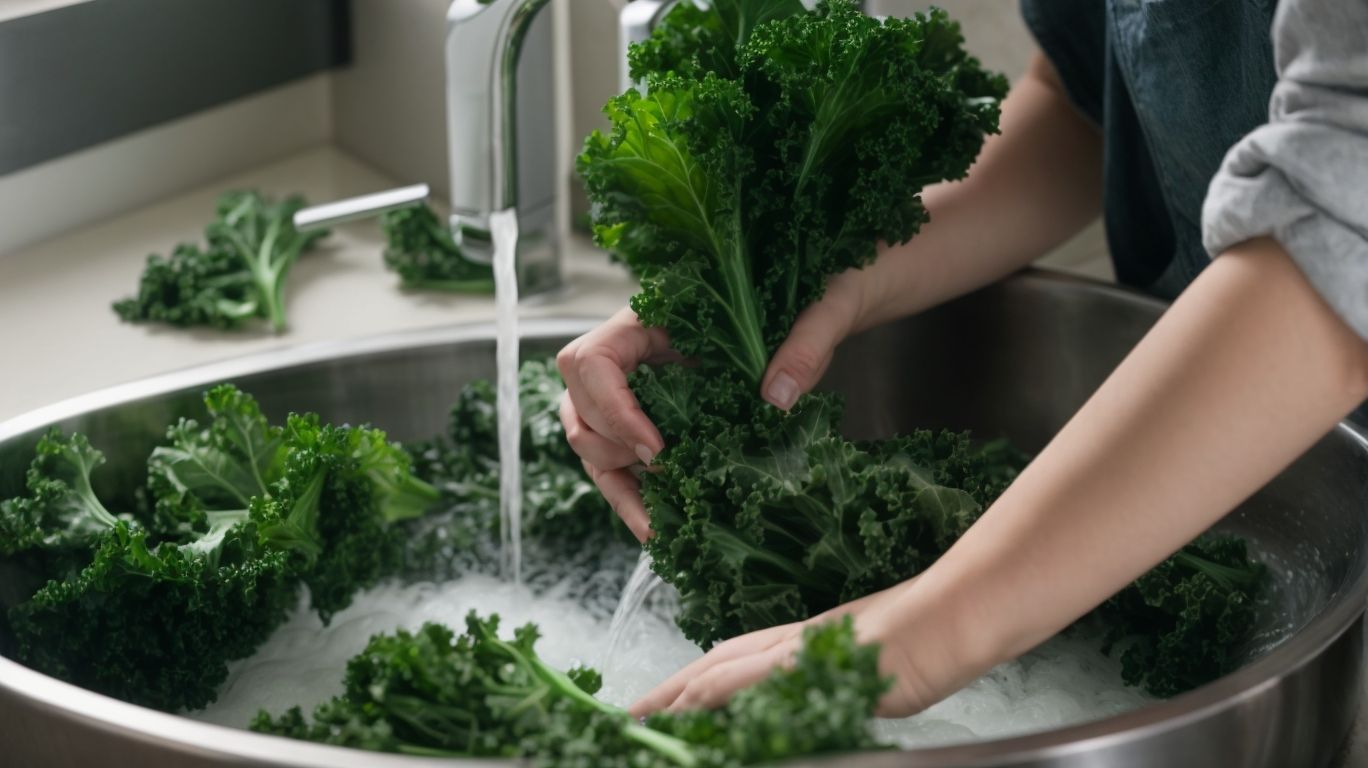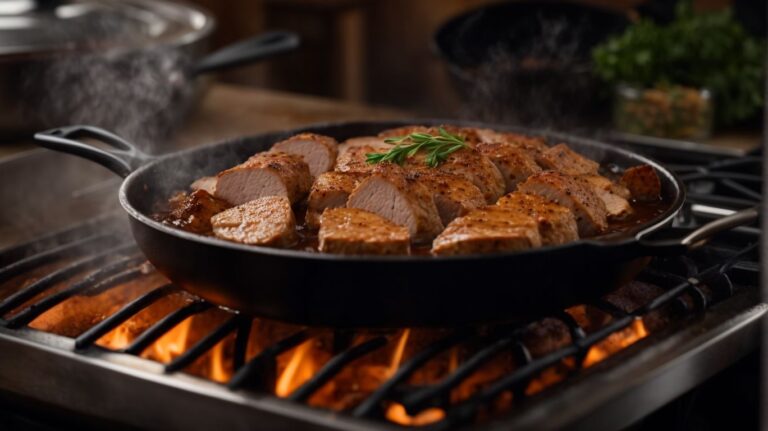How to Cook Kale Without Losing Nutrients?
Are you a fan of kale but not sure how to cook it properly without losing its nutritional benefits?
We explore the world of kale with culinary expert Chris Poormet. From the nutritional benefits of kale to the importance of cooking it correctly, we cover it all.
Discover different ways to cook kale, tips for retaining its nutrients, and delicious recipes to try.
Get ready to elevate your kale cooking game with Chris Poormet’s expertise!
Key Takeaways:
Who Is Chris Poormet?
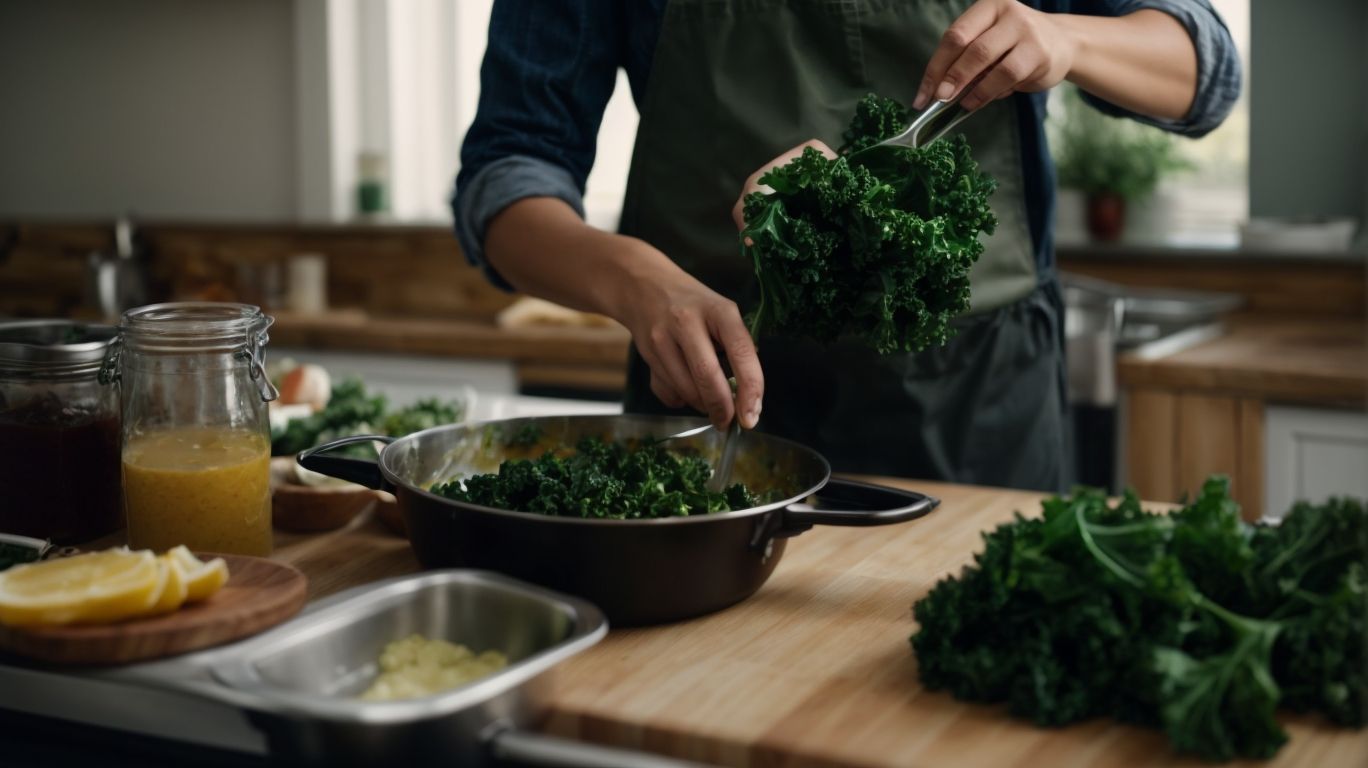
Credits: Poormet.Com – Alan Johnson
Chris Poormet is a renowned culinary expert and the owner of Poormet.com, a popular blog recognized for its award-winning recipes and culinary tips. With a background as a former chef and accolades in food photography, Chris has garnered a devoted following in the culinary world.
His expertise in food photography shines through in the visually captivating images that grace his blog, enticing readers to explore his flavorful creations. Before launching Poormet.com, Chris honed his culinary skills in top-notch kitchens, solidifying his reputation as a talented chef.
Being crowned Culinary Blogger of the Year further solidified Chris’s position as a respected authority in the food blogging sphere, setting him apart with his innovative recipes and insightful culinary advice.
What Is Kale?
Kale, a leafy green vegetable belonging to the cruciferous family, is often hailed as a superfood due to its exceptional nutrient profile. It is rich in antioxidants, vitamins, and other essential nutrients that contribute to its reputation as a nutritional powerhouse.
Not only does kale provide an abundance of vitamin K, known for its role in blood clotting and bone health, but it is also a good source of vitamin C, essential for a healthy immune system. Kale contains significant amounts of beta-carotene, a precursor to vitamin A, promoting good vision and skin health. Its high fiber content supports digestive health and can aid in weight management by promoting a feeling of fullness. When consumed regularly, kale can contribute to overall health and well-being.
What Are The Nutritional Benefits Of Kale?
Kale is a nutrient-dense leafy green that provides a plethora of health benefits, including a high concentration of vitamins, fiber, and antioxidants. Its nutrient-rich composition supports overall well-being and may reduce the risk of chronic diseases through its antioxidant properties and essential vitamins.
For instance, kale is particularly renowned for being an excellent source of vitamin K, a nutrient vital for blood clotting and bone health. Its abundant fiber content aids in digestion and promotes gut health by supporting healthy bowel movements. The antioxidant properties of kale, such as vitamin C and beta-carotene, help combat oxidative stress in the body, thus enhancing immunity and possibly reducing inflammation.
Why Is It Important To Cook Kale Correctly?
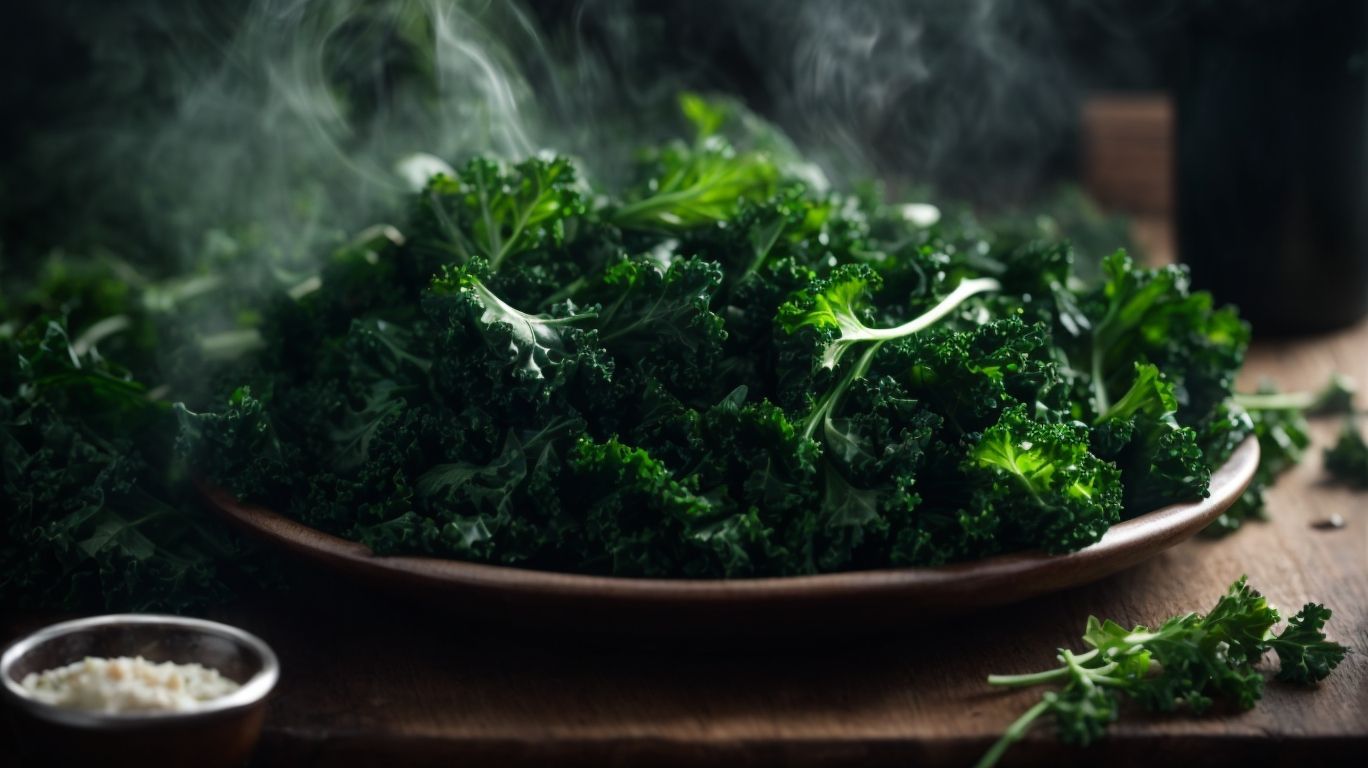
Credits: Poormet.Com – Jack Smith
Cooking kale correctly is crucial to maximize its nutrient absorption and minimize the presence of anti-nutrients like oxalates. Proper cooking methods help release minerals for better absorption, enhancing the health benefits kale can offer when consumed.
Steaming or stir-frying kale for a short duration can significantly reduce oxalic acid levels, making important nutrients more available for the body to absorb. Properly preparing kale through these methods can also help break down tough cellulose, easing digestion. Boiling kale can further degrade oxalates but may lead to water-soluble nutrient loss, so it’s essential to find a balance in cooking techniques. This balance ensures a nutrient-dense and health-boosting addition to your meals.
What Are The Different Ways To Cook Kale?
There are various methods to cook kale, each offering unique flavors and textures.
Boiling kale is a common method that helps retain its vibrant color and nutritional value, while steaming kale preserves its crunchiness and natural taste.
Blending kale into smoothies not only enhances their nutritional profile with a burst of vitamins and minerals but also adds a beautiful green hue.
Incorporating kale into dishes like soups, salads, and stir-fries introduces a flavorful element that complements other ingredients.
Whether sautéed with garlic and olive oil or baked into crispy kale chips, this leafy green can elevate any meal with its earthy goodness.
Steaming
Steaming kale is a popular cooking method that helps retain its nutrient content while enhancing its flavor and texture.
By gently heating the kale with minimal water, the steaming process maintains the integrity of the essential vitamins, minerals, and antioxidants present in kale. This cooking technique is crucial for preserving the nutritional value of kale, as it prevents excessive nutrient loss that can occur with other methods like boiling. Steamed kale offers a delightful balance of tenderness and vibrant color, making it an appealing and nutritious addition to meals. To optimize the nutrient retention of kale, it is recommended to steam it for just the right amount of time until it reaches the desired level of softness while still retaining its firmness.
Sauteing
Sauteing kale in healthy fats like olive oil can impart rich flavors and complement its earthy taste. Pairing sauteed kale with proteins or grains can create a balanced and flavorful dish that showcases the versatility of this leafy green.
One popular method is to saute kale in olive oil with garlic, creating a savory base for various dishes. The addition of garlic provides a depth of flavor that pairs well with the robustness of kale.
Regarding food pairings, sauteed kale works wonderfully with grilled chicken, offering a contrast in textures and flavors. Another great pairing is sauteed kale with quinoa, combining the nuttiness of the grain with the earthy tones of the kale.
Roasting
Roasting kale can create crispy and flavorful chips that offer a satisfying crunch and a boost of antioxidants like vitamin K. Proper storage of roasted kale ensures its freshness and flavor, making it a convenient and nutritious snack option.
When roasting kale to make chips, start by preheating the oven to the recommended temperature to achieve that perfect crispiness. After washing and thoroughly drying the kale leaves, gently massage them with a bit of olive oil and sprinkle some seasonings like sea salt or garlic powder to enhance the taste.
Spread the kale leaves evenly on a baking sheet, ensuring they are not overcrowded to allow for proper roasting. The process of roasting not only transforms the texture of kale into a delightful crunch but also intensifies the flavors, making it a tasty snack for any time of the day.
Blending
Blending kale into smoothies or sauces is a convenient way to incorporate its nutrient-rich goodness into daily meals.
The addition of kale not only adds a nutritional punch but also helps in enhancing the overall flavor profile of the dish. Blending kale helps break down the tough fibers present in the leaves, making it easier for the body to absorb and utilize the vitamins and minerals it offers. This method of preparation ensures that the nutrients are not lost during cooking, preserving the integrity of the ingredients.
Blending also allows for easy customization, making it simple to add other nutrient-rich ingredients such as fruits, nuts, and seeds for a well-rounded meal or snack. Whether you prefer your kale blended into a creamy smoothie or a flavorful sauce, you can enjoy the benefits of this versatile green powerhouse in a delicious and convenient way.
Adding To Smoothies
Adding kale to smoothies can elevate their nutritional value by introducing vitamin A and other essential nutrients.
This simple method of incorporating kale enhances the overall nutritional content of smoothies, making them a wholesome option for balanced food consumption.
Kale is a powerhouse of nutrients, offering a rich source of vitamin A, vitamin C, calcium, and antioxidants. Including kale in smoothie recipes not only boosts the nutritional profile but also adds a delightful green hue. Vitamin A in kale promotes healthy vision, skin, and immune function, making it a valuable addition to the daily diet. Consuming kale regularly in smoothies can help in meeting the dietary requirements of essential nutrients.
What Are The Tips For Cooking Kale Without Losing Nutrients?
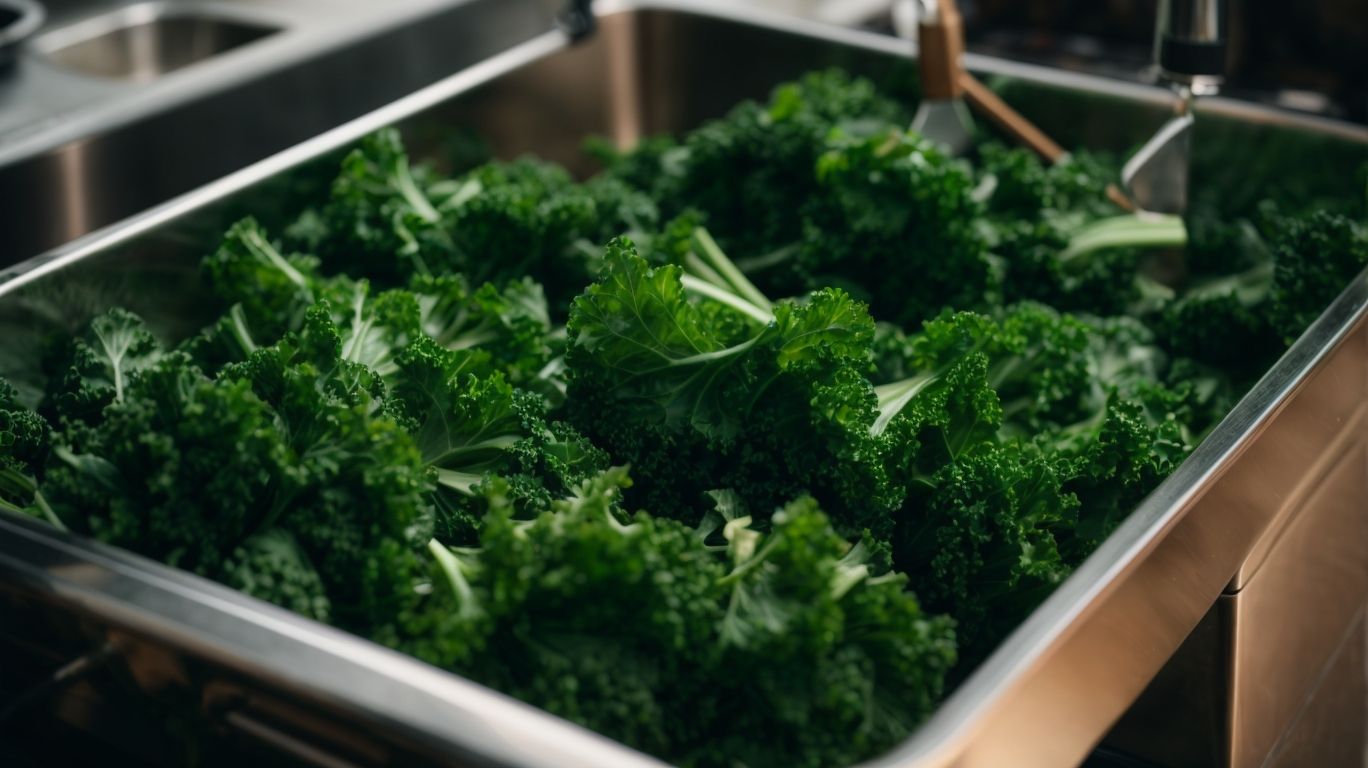
Credits: Poormet.Com – James Hall
To preserve the nutrient content of kale during cooking, it is essential to follow specific tips that ensure maximum nutrient absorption and retention. By applying these guidelines, one can enjoy the full benefits of kale’s nutrient-rich profile without compromising its health-enhancing properties.
One effective tip is to opt for steaming kale instead of boiling it, as boiling may lead to nutrient loss in the cooking water. Steaming helps retain the water-soluble vitamins and minerals, ensuring you get the most out of every bite. Consider pairing kale with healthy fats like olive oil or avocado to enhance the absorption of fat-soluble vitamins present in kale.
Another great way to preserve kale’s nutrients is by keeping the cooking time short – this minimizes nutrient degradation. Stir-frying or quickly sautéing kale leaves can help maintain their texture and nutritional value. Remember not to overcook the kale as this can diminish its nutrient content.
Do Not Overcook
Overcooking kale can lead to nutrient loss, particularly in minerals that are essential for a balanced diet. To preserve the nutritional value of kale, it is crucial to avoid overcooking and ensure that the vegetable retains its vital nutrients for optimal health benefits.
Kale is rich in iron, calcium, magnesium, and potassium, all of which play vital roles in supporting various bodily functions.
When kale is overcooked, these minerals are at risk of leaching out into the cooking water, diminishing the vegetable’s nutritional content.
Proper cooking times are essential to maintain these minerals within the kale leaves, ensuring maximum absorption during digestion.
By implementing appropriate cooking techniques, such as light steaming or sautéing, you can enjoy the full spectrum of health benefits that kale has to offer.
Use A Minimal Amount Of Water
When cooking kale, using a minimal amount of water helps retain its nutrient content and enhances overall nutrient intake. Scientific evidence from peer-reviewed studies supports the benefits of minimal water usage in cooking kale to maximize its nutritional value.
By limiting the amount of water, you can prevent the loss of water-soluble vitamins like vitamin C and B-vitamins, which are crucial for various bodily functions. Excess water can lead to nutrient leaching, reducing the kale’s nutritional potency.
Research on cooking techniques has shown that boiling kale in excess water can strip away up to 50% of its antioxidants, such as vitamin A and K. This loss could significantly impact the health benefits you derive from consuming this leafy green vegetable.
Cook With Healthy Fats
Cooking kale with healthy fats such as olive oil or avocado oil can enhance its flavor and promote the absorption of fat-soluble nutrients like vitamin K. Incorporating healthy fats in kale recipes undergoes an editorial process that ensures the culinary quality and nutritional benefits of the dish.
When kale is cooked in unison with healthy fats, it not only elevates the taste but also unlocks a plethora of health benefits. The presence of fats aids in extracting the full nutritional value of kale, especially its fat-soluble nutrients including vitamin A, E, and K. By incorporating olive oil or avocado oil when preparing kale dishes, one can create a culinary masterpiece that is both delicious and nutritious.
Add Acidic Ingredients
Incorporating acidic ingredients like lemon or vinegar when cooking kale can help preserve its vitamin C content and enhance the flavor profile of the dish. Dietitians recommend adding acidic elements to kale recipes to optimize the nutrient availability and culinary experience.
Acidic ingredients not only act as a natural preservative for the vitamin C in kale but also contribute to a more vibrant and balanced taste. When you introduce a splash of citrus or a dash of vinegar to your kale dishes, the acidity helps in unlocking the full potential of other nutrients present in this leafy green superfood.
By following the guidance of health experts, such as dietitians, who emphasize the benefits of including acidic components in your kale cooking, you can ensure that your meals not only taste delicious but also offer maximum nutritional benefits. This simple culinary tip can transform a regular kale dish into a nutrient-packed powerhouse that your body will thank you for.
What Are Some Delicious Kale Recipes?
Explore a range of delicious kale recipes that offer a blend of flavors and nutrient-rich ingredients suitable for various meal ideas. From salads and soups to stir-fries and casseroles, these creative recipes showcase the versatility of kale in culinary creations.
Salads featuring kale can be a refreshing and nutritious option, with combinations like kale, quinoa, cranberries, and almonds dressed in a tangy vinaigrette.
On colder days, hearty kale soups with beans, carrots, and a dash of lemon zest provide warmth and comfort.
Stir-fries with kale, tofu, bell peppers, and a savory soy-ginger sauce offer a quick and flavorful meal option.
For a cozy dinner, consider a cheesy kale and potato casserole, baked until bubbly and golden brown.
Kale and Quinoa Salad
A kale and quinoa salad is a nutrient-dense dish that combines the health benefits of kale with the protein-rich goodness of quinoa. This vibrant salad offers a rich source of vitamin K and other essential nutrients, making it a wholesome and satisfying meal option.
Preparing a kale and quinoa salad involves massaging the kale leaves to tenderize them and rinsing the quinoa thoroughly before cooking to remove any bitterness. Mixing these superfoods results in a colorful and texturally interesting dish that can be further enhanced with a variety of add-ons like cherry tomatoes, avocado slices, or a zesty lemon dressing.
The nutritional benefits of this salad are truly impressive. Kale provides abundant vitamins A, C, and K, antioxidants, and fiber, while quinoa delivers complete plant-based protein and minerals like iron and magnesium. Together, they create a powerhouse of nutrients that support overall well-being and vitality.
Kale and Sweet Potato Soup
Indulge in a comforting bowl of kale and sweet potato soup, brimming with antioxidants and folate-rich ingredients.
This hearty soup melds the robust earthiness of kale with the subtle sweetness of sweet potatoes, offering a harmonious blend of flavors that dance on your taste buds.
The richness of antioxidants in kale, such as vitamin C and beta-carotene, along with the folate content in sweet potatoes, elevates the nutritional profile of this soup, making it a powerhouse of health benefits.
Not only does this soup nourish your body with vital nutrients, but it also provides a warm and comforting experience, perfect for cozy evenings or chilly days.
Kale and Mushroom Stir-Fry
Savor the flavors of a kale and mushroom stir-fry, a nutrient-rich dish packed with potassium and magnesium. This vibrant stir-fry blends the earthy notes of kale with the savory essence of mushrooms, offering a delicious and healthful option for a satisfying meal.
The combination of kale and mushrooms creates a dynamic flavor profile that balances the hearty texture of kale with the umami richness of mushrooms. Along with their taste appeal, these ingredients are powerhouses of essential nutrients.
Kale, known for its high potassium content, supports healthy nerve function and cardiovascular health. Meanwhile, mushrooms contribute magnesium that aids in energy production and muscle function.
Together, these ingredients not only elevate the taste of the dish but also provide a significant nutritional boost, making it a smart choice for those looking to enhance their meal with potassium and magnesium.
Kale and White Bean Casserole
Delight in the wholesome goodness of a kale and white bean casserole, brimming with fiber and potassium. This comforting casserole harmonizes the hearty texture of kale with the creamy richness of white beans, offering a nutritious and satisfying meal option for any occasion.
Rich in fiber, this casserole not only provides essential nutrients but also promotes digestive health. The earthy flavor of kale complements the mild taste of white beans, creating a perfect balance of flavors and textures. The potassium content in this dish helps support muscle function and blood pressure regulation.
Whether you are seeking a cozy weeknight dinner or a nourishing meal prep option, this kale and white bean casserole is sure to satisfy your taste buds and keep you energized throughout the day.
Frequently Asked Questions
Can I cook kale without losing its nutrients?
Yes, it is possible to cook kale without losing its nutrients. There are various cooking methods that can help retain the nutrients in kale, such as steaming, sautéing, and blanching.
What is the best way to cook kale to preserve its nutrients?
The best way to cook kale without losing its nutrients is by steaming it. Steaming helps to retain the water-soluble nutrients in kale, such as vitamin C and B vitamins.
Does boiling kale reduce its nutritional value?
Boiling kale can reduce its nutritional value as some of the water-soluble nutrients may leach out into the water. It is recommended to use the cooking water for soups or stews to retain these nutrients.
Is it okay to eat raw kale instead of cooking it?
Yes, raw kale is a great source of nutrients such as fiber, vitamin C, and K. However, some people may find it difficult to digest raw kale, so it is important to listen to your body and cook it if needed.
What is the best cooking method for maximum nutrient retention in kale?
Steaming is considered the best cooking method for maximum nutrient retention in kale. This method helps to soften the kale while preserving its nutrients.
Can I reheat cooked kale without losing its nutrients?
Yes, you can reheat cooked kale without losing its nutrients. However, it is important to reheat it using gentle heat and not overcook it to prevent nutrient loss.

